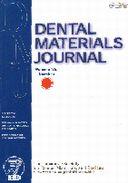27 巻, 1 号
選択された号の論文の20件中1~20を表示しています
- |<
- <
- 1
- >
- >|
Original papers
-
2008 年27 巻1 号 p. 1-6
発行日: 2008年
公開日: 2009/03/05
PDF形式でダウンロード (406K) -
2008 年27 巻1 号 p. 7-15
発行日: 2008年
公開日: 2009/03/05
PDF形式でダウンロード (566K) -
2008 年27 巻1 号 p. 16-20
発行日: 2008年
公開日: 2009/03/05
PDF形式でダウンロード (452K) -
2008 年27 巻1 号 p. 21-28
発行日: 2008年
公開日: 2009/03/05
PDF形式でダウンロード (819K) -
2008 年27 巻1 号 p. 29-34
発行日: 2008年
公開日: 2009/03/05
PDF形式でダウンロード (375K) -
2008 年27 巻1 号 p. 35-48
発行日: 2008年
公開日: 2009/03/05
PDF形式でダウンロード (3549K) -
2008 年27 巻1 号 p. 49-55
発行日: 2008年
公開日: 2009/03/05
PDF形式でダウンロード (444K) -
2008 年27 巻1 号 p. 56-60
発行日: 2008年
公開日: 2009/03/05
PDF形式でダウンロード (280K) -
2008 年27 巻1 号 p. 61-68
発行日: 2008年
公開日: 2009/03/05
PDF形式でダウンロード (535K) -
2008 年27 巻1 号 p. 69-74
発行日: 2008年
公開日: 2009/03/05
PDF形式でダウンロード (414K) -
2008 年27 巻1 号 p. 75-80
発行日: 2008年
公開日: 2009/03/05
PDF形式でダウンロード (468K) -
2008 年27 巻1 号 p. 81-92
発行日: 2008年
公開日: 2009/03/05
PDF形式でダウンロード (992K) -
2008 年27 巻1 号 p. 93-98
発行日: 2008年
公開日: 2009/03/05
PDF形式でダウンロード (614K) -
2008 年27 巻1 号 p. 99-104
発行日: 2008年
公開日: 2009/03/05
PDF形式でダウンロード (357K) -
2008 年27 巻1 号 p. 105-116
発行日: 2008年
公開日: 2009/03/05
PDF形式でダウンロード (801K) -
2008 年27 巻1 号 p. 117-123
発行日: 2008年
公開日: 2009/03/05
PDF形式でダウンロード (584K) -
2008 年27 巻1 号 p. 124-132
発行日: 2008年
公開日: 2009/03/05
PDF形式でダウンロード (822K) -
2008 年27 巻1 号 p. 133-138
発行日: 2008年
公開日: 2009/03/05
PDF形式でダウンロード (405K)
Technical reports
-
2008 年27 巻1 号 p. 139-144
発行日: 2008年
公開日: 2009/03/05
PDF形式でダウンロード (317K) -
2008 年27 巻1 号 p. 145-148
発行日: 2008年
公開日: 2009/03/05
PDF形式でダウンロード (327K)
- |<
- <
- 1
- >
- >|
